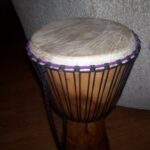Integers are the whole numbers and their opposites (…-2, -1, 0, 1, 2…). Students, particularly in middle school, will be learning to subtract these positive and negative numbers. As a long time middle school math teacher, I know that this math lesson isn’t easy for these kids. I believe, however, that when a little rhyme, rhythm, or fun is brought to a concept, students have a better chance of remembering it. That’s why I have always used the “Change the sign…Change the sign” jingle (explained below) when teaching the subtraction of integers. Keep in mind that all lessons should start with concrete explanations and hands-on activities when possible. Using a number line to demonstrate the subtraction of integers at the onset is helpful as well.
Subtracting a Negative Is Like Adding a Positive
Subtracting with negative numbers does seem like a strange idea to students. After all, they’ve learned in English class that double negatives aren’t good! The easiest way to keep subtraction of integers straight in the minds of the students is to rewrite the subtraction problems as addition problems. They seem relieved when they realize that since they’ve already learned the addition rules, subtraction won’t be so bad.
A Solid Understanding of Adding Integers is a Prerequisite
Before you teach the subtraction of integers, students should feel very comfortable with adding positive and negative numbers. Read this article for tips on how to teach the addition of integers. Here are the integer addition rules, in a nutshell:
- positive + positive: add absolute values; sum is positive
- negative + negative: add absolute values; sum is negative
- positive + negative or negative + positive: subtract smaller absolute value from greater; sum has sign of the number with the greater absolute value
Note: The absolute value of a number is its distance from zero on a number line. It is always positive. Students like to think of it as “looking at a number but ignoring its sign.”
Change the Sign…Change the Sign
Tell students that when they see negative numbers in a subtraction problem, the jingle “Change the sign…Change the sign” should pop into their heads. Explain that when subtracting two integers, the following applies:
- The first number will stay the same.
- The operation sign is subtraction, but they will change the sign to addition.
- Next they will change the sign of the second number to its opposite. If it is a positive number, they’ll make it negative, and vice-versa.
This is where the rhythm enters. As you emphasize the fact that they will change the operation sign and the second number’s sign, keep repeating, “Change the sign…Change the sign.” I would almost sing it while I snapped my fingers in rhythm. The students would invariably giggle and then join me. The next step is to do several subtraction problems together as a class. For each problem, chant the “Change the sign…Change the sign” rhythm together.
Example
(-4) – (12) Rewrite as an addition problem.
(-4) + (–12) = -16
Keep the first number the same (-4).
Change the minus sign to an addition sign. (+)
Change the sign of the positive (12) to a negative. (-12)
Follow the rules for the addition of integers.
Practice Make Perfect
As the students practice, it’s important for the teacher to move around the classroom, checking on their progress. I always had my students work in partners so that they could help one another understand. There are free, printable worksheets available online at sites such as kutasoftware.com where you can print this page of integer problems and answers. Also, for $39.98 per year, eduhelper.com makes it easy to print worksheets such as this one, puzzles, brain teasers, and so on for specific topics. It’s cheaper when multiple teachers at one site order.
Additional Math Articles to Save in Your Favorites
The Commutative and Associative Properties
Mean, Median, and Mode
Perfect Squares and Square Roots
Slideshow of Math Bulletin Board Ideas



